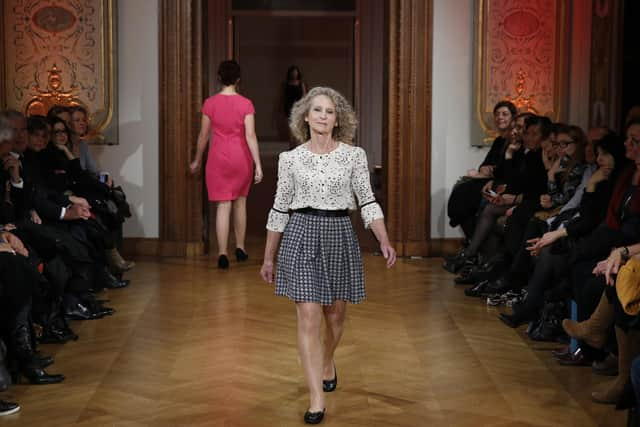Sick of fast fashion? Circular economy of second-hand clothes can give you the same dopamine hit – Laura Waddell
I am surprised, when listing my first item on an online marketplace – a dress that no longer fits – how straightforward it is to get started. Selling is almost as easy as buying, and for those of us with bulging wardrobes, that’s entirely too easy. I include the necessary information, which isn’t much at all. Colour, material, size; anything much further beyond ‘suggested occasion’ feels like frippery.
Scanning other shopfronts to get a sense of what’s expected of a listing, and to make sure I’m not wildly off mark, I start noticing trends in the descriptions, like one puffy-sleeved, cream and pink vintage dress screaming Laura Ashley but instead labelled “cottagecore”.
Advertisement
Hide AdAdvertisement
Hide AdThe site, Vinted, definitely skews younger than Ebay (which despite now advertising on Love Island, I found laborious and slow-moving when I last tried it several years ago) but not so much so that it’s alienating to anyone not actively doing a TikTok dance right this very moment. In fact, it was my Gen X friend Katy with her 70s-inflected academia stylings, all hip patterns and chic turtlenecks, who recommended it and prompted me to give fashion reselling another go.


Dead-end service station arguments
Things have modernised; I discovered, having a look around the new apps that in their efficiency feel more like ordering a cab than negotiating the auction house. Descriptions favour brevity. Even the sales patter is kept to a relative minimum, which makes it easy to pop things up without fuss.
Besides, what else do people really need to know? I do not tell its potential purchaser the reason I want this particular dress I am listing out of my wardrobe is that because every time I look at its sunny floral pattern, innocuous daisies on a bed of gold, I am transported to a day soured by dead-end arguments in service stations or an especially cursed wedding anniversary party in a South Glamorgan hotel whose level of dysfunction would shame Basil Fawlty. Their lore insistent of a resident ghost, the place was so understaffed that had one turned up, an extra pair of hands could only have made things better. Perfect for your spring or summer, I write, omitting the subtext – just not mine.
Listing more than three items increases the likelihood of a sale; but thinking back to the last time I tried this, I don’t want to put too much time into photographing items until I see if it’s worth it. But I’m quickly surprised. Within 48 hours, I sell something. The first to go from my modest shop of half a dozen items is a chunky charm fashion necklace from a hyped high street shop designer brand collaboration, still with its cardboard price tag wrapped around the heavy gold-coloured metal chain.
I bought it during the pandemic and have never, not once, worn it; the imagined occasion, some pined-for excursion, never having come to pass and distantly irrelevant to my concerns today. It is easy to take it from my things-for-sale storage box and drop it into a cardboard packet, wondering whether its buyer was imagining themselves or someone else wearing it.
Five-star review hopes
With one sale to date, I quickly develop pride in my shop. Anticipating more to come, in an uncharacteristically optimistic mood, I buy a pack of biodegradable postage bags, swayed by a graphic with the words “worms love these!”, and hoping my expected smattering of customers will too.
Next time I won’t have to reuse packaging; although it’s acceptable, it’s not always to hand. While the compostable bags are not the cheapest option, their eco-friendliness is in the spirit of the second-hand marketplace and I've come to concern myself with customer expectations, hoping the bit of tissue I packed round my wares takes it into five-star review territory.
Having a digital storefront makes me feel like a creature in the game Animal Crossing, a cosy little thought that makes me want it to look neat and nice. I put a little more effort into steaming the creases from next item I list, a few more seconds fanning out skirts to suggest movement.
What a rush
Advertisement
Hide AdAdvertisement
Hide AdIt’s quickly apparent which items spark interest. Some wait for their buyer quietly, while others lap up all the attention immediately – excitingly for the dress and its chance of having a life happier than the one I could give it. Notifications that buyers have favourited the item and offers of 75 per cent of what I’ve asked keep coming in, but before my counter-offer to meet in the middle can be accepted, someone pays my full asking price and the item is marked “sold”. What a rush for a dark and dreich February night. I begin looking around to see what else I can sell.
Without too much effort, I made £45 from selling on two items with lots of life still in them that would otherwise have languished in my wardrobe. But folly; so good is the site’s own homepage algorithm that exactly the same amount of money slips away from me on an impulse purchase of a leather skirt at a quarter of its original retail price; somehow, exactly the right item to tempt me at exactly the right time.
Perhaps I need to readjust my expectations. Rather than seeing this project as an additional income stream, perhaps this should be ringfenced fun money. I am freshly invigorated by the idea of chopping and changing, buying and selling my wardrobe regularly rather than hoarding investment pieces. A way for the circular economy of my already full wardrobe to bring dopamine hits. A genius rationale for shopping. Or at least one less win for fast fashion.
Comments
Want to join the conversation? Please or to comment on this article.
